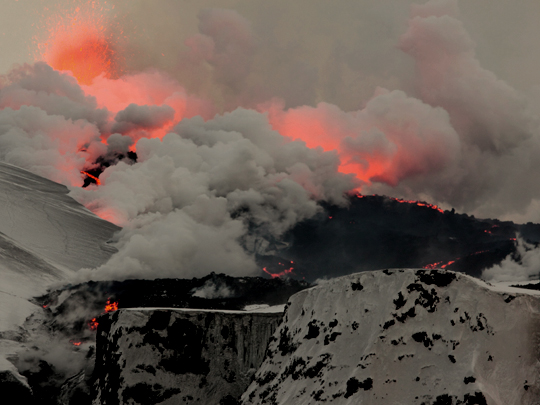Wikimedia Commons / CC-BY-SA-3.0 / GFDL
1 – Volcanic Eruption in Iceland Causes Havoc for Air Travel
The volcanic eruptions of Eyjafjallajökull in Iceland caused huge disruption to air travel across western and northern Europe in April 2010.
There was to be further localized disruption which continued into May 2010.
Although relatively small for a volcanic eruption, beginning on 14 April, the eruption created an ash cloud that led to the closure of most of the European airspace until 20 April 2010.
The fine ash particles and the large volume of steam from the glacial meltwater sent an ash plume which is hazardous to aircraft high into the upper atmosphere.
There were an estimated 250 million cubic meters of ejected rock, with an ash plume that rose to a height of around 9 km (5.6 miles).
The explosive eruption ejected its ash plume directly into the jet stream, which was then carried over Europe into some of the busiest airspaces in the world.
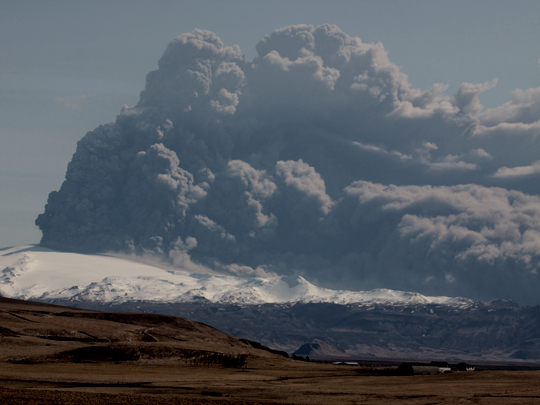
The ash cloud covered large areas of Northern Europe, causing about 20 countries to close their airspace to commercial jet traffic, affecting up to 10 million travelers.
It created the highest level of air travel disruption since the Second World War.
In October 2010, the University of Iceland Institute of Earth Sciences stated that the eruption was officially over, although the area was still geothermally active and might erupt again
The International Air Transport Association stated the total loss for the airline industry was around US$1.7 billion (€1.3 billion).
2 – The IMF Bailout Ireland & Greece
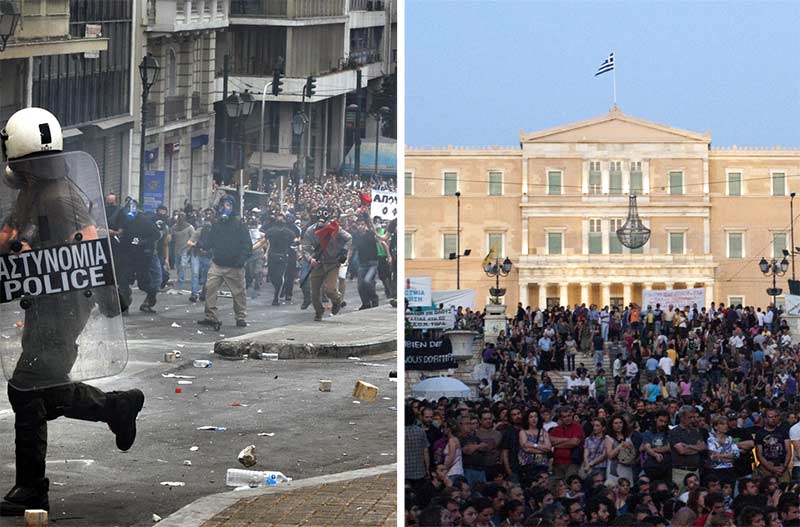
Following the financial crisis of 2007–08, Greece was hit particularly hard because its main industries of shipping and tourism were especially sensitive to change.
The government spent heavily to keep the economy functioning, but the country’s debt increased accordingly.
Greece’s budget deficit reached 15.1% of GDP in 2009, which was coupled with a high public debt reaching 127% of GDP in the same year.
By April 2010, it was clear the country was becoming unable to borrow from the markets. Standard & Poor’s slashed Greece’s sovereign debt rating to junk status amid fears of default.
On 23 April, the Greek government requested an initial loan of €45 billion from the EU and IMF, covering its financial needs for 2010. In May, the Greek government announced a series of austerity measures to secure a three-year loan worth €110 billion.
Greece would agree to a further two bailout packages prior to declaring they had successfully ended their bailouts on 20 August 2018.
Ireland’s Financial Crisis
The Irish property bubble burst in 2008, bringing an end to a period of economic growth known as the “Celtic Tiger”. Irish banks had lost an estimated 100 billion euros, largely related to defaulted loans to property developers and homeowners.
This led to the collapse of the economy in 2008, resulting in a rise in unemployment from 4% in 2006 to 14% by 2010.
Despite austerity measures, the national budget went from a surplus in 2007 to a deficit of 32% GDP in 2010.
With yields on Irish Government debt rising rapidly, the Government sought assistance from the EU and IMF, resulting in a €67.5 billion bailout agreement on 29 November 2010.
In return, the government agreed to reduce its budget deficit to below three percent by 2015. In April 2011, despite all the measures taken, Moody’s downgraded the banks’ debt to junk status.
In July 2012, Ireland was able to return to the financial markets, selling over €5 billion in long-term government debt. In December 2013, after three years on financial life support, Ireland finally left the EU/IMF bailout program.
3 – Wikileaks Scandal & the Arrest of Julian Assange

The Afghan War documents were published by WikiLeaks on 25 July 2010, disclosing internal U.S. military logs from the War in Afghanistan. The over 91,000 documents, mostly classified as secret, date from between January 2004 and December 2009.
Prior to the initial release, WikiLeaks made the logs available to The Guardian, The New York Times and Der Spiegel.
The leak revealed information on the deaths of civilians, increased Taliban attacks, and involvement by Pakistan and Iran in the insurgency. I
t also showed footage from a July 2007 airstrike in Baghdad, in which Iraqi journalists were among those killed.
On 22 October 2010, the Iraq War documents were disclosed by WikiLeaks, containing over 390,000 U.S. Army field reports during the Iraq War from 2004 to 2009. It is the biggest leak in U.S. military history.
The leak resulted in the Iraq Body Count project adding 15,000 civilian deaths to their calculations, bringing their total to over 150,000, with over three-quarters being civilians.
In November 2010, Sweden issued an international arrest warrant for Assange, having questioned him months earlier about allegations of sexual assault.
Assange denied the allegations, saying that were a pretext for him to be extradited to the United States because of his role in publishing secret U.S. Army documents.
Assange surrendered to UK police on 7 December 2010 but was released on bail only days later.
In August 2012, Assange was granted asylum in the Ecuadoran Embassy in London due to fears of political persecution and possible extradition to the United States. He remained in the Embassy for almost seven years.
In April 2019, Assange’s asylum was withdrawn following a series of disputes with the Ecuadorian authorities.
He was swiftly arrested, found guilty of breaching the Bail Act and sentenced to 50 weeks in prison in the United Kingdom.
4 – The Deepwater Horizon Disaster
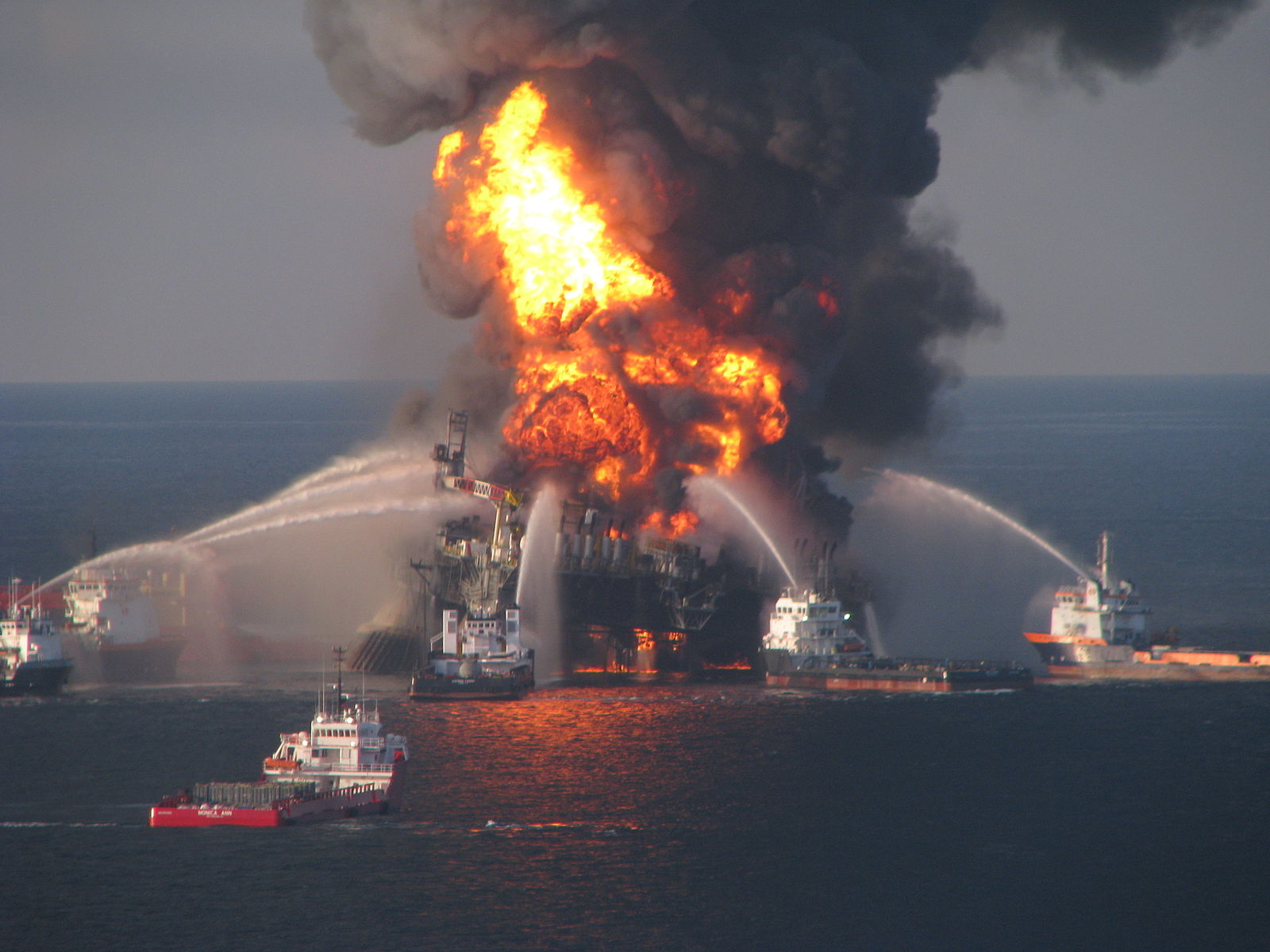
The Deepwater Horizon oil spill began on 20 April 2010, in the Gulf of Mexico.
It is considered to be the largest marine oil spill in the history of the petroleum industry and estimated to be up to 31% larger in volume than the previous largest.
The U.S. Federal Government estimated the total discharge at 4.9 million barrels. After several failed efforts to contain the flow, the well was finally declared sealed on 19 September 2010.
The Deepwater Horizon oil spill is regarded as one of the largest environmental disasters in American history.
A huge response effort ensued to protect beaches, wetlands, and estuaries from the spreading oil. However, despite the cleanup efforts, there was extensive damage to marine and wildlife habitats, fishing and tourism industries.
In Louisiana, millions of pounds of oily material have been removed from the beaches since the spill. In waters as far away as the Florida Panhandle and Tampa Bay, scientists have found the oil and dispersant mixture to be embedded in the sand.
In the years, after the spill, dolphins and other marine life died in record numbers, with infant dolphins dying at six times the normal rate.
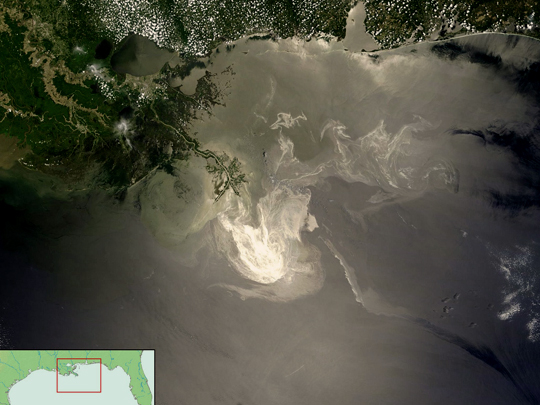
A U.S. Government report, published in September 2011, pointed to defective cement on the well, faulting mostly BP, but also rig operator Transocean and contractor Halliburton.
A White House commission also blamed BP and its partners for a series of cost-cutting decisions and a lack of a safety system.
In November 2012, BP and the U.S. Department of Justice settled federal criminal charges, with BP pleading guilty to 11 counts of manslaughter, two misdemeanors, and a felony count of lying to Congress.
In July 2015, BP agreed to pay $18.7 billion in fines, the largest corporate settlement in United States history.
As of 2016, BP’s cost for the clean-up, damages, and penalties has reached over $54 billion.
5 – Devastating Earthquake in Haiti
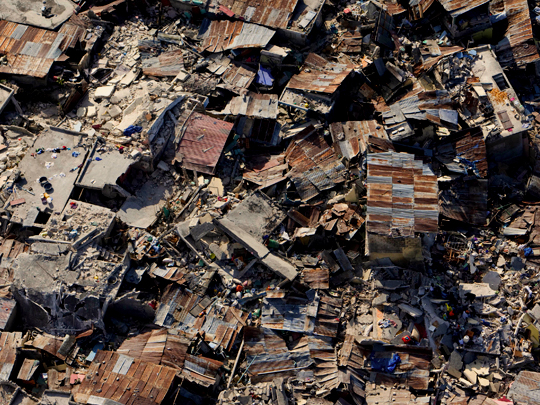
Haiti was hit by a catastrophic magnitude 7.0 earthquake, with an epicenter near the town of Léogâne, approximately 25 kilometers (16 miles) west of Haiti’s capital, on 12 January 2010.
By 24 January, there had been over 50 aftershocks measuring 4.5 or greater had been recorded, seeing an estimated three million people affected by the quake.
Death toll estimates range between 100,000 and 160,000, with Haitian government figures ranging from 220,000 to 316,000, although these figures have been disputed.
It is estimated up to 280,000 residences and commercial buildings were collapsed or severely damaged. The existing poverty and poor housing conditions increased the death toll from the disaster.
The Presidential Palace and the Port-au-Prince Cathedral were also damaged, with the quake also killing the Archbishop of Port-au-Prince, Joseph Serge Miot.
The headquarters of the United Nations Stabilization Mission in Haiti, located in Port-au-Prince, also collapsed, killing many, including the Mission’s Chief, Hédi Annabi.
Communication systems, transport facilities, hospitals, and electrical networks had all been damaged by the earthquake, hampering rescue efforts.
Many countries pledged funds, also sending rescue and medical teams, engineers and support personnel. On 22 January, “Hope for Haiti Now” aired, becoming the most-watched telethon in history, raising US$58 million within 24 hours.
Port-au-Prince’s morgues were overwhelmed with tens of thousands of bodies. These had to be buried in mass graves. On 23 January, the Haitian government officially called off the search for survivors.
6 – The Chilean Mining Accident
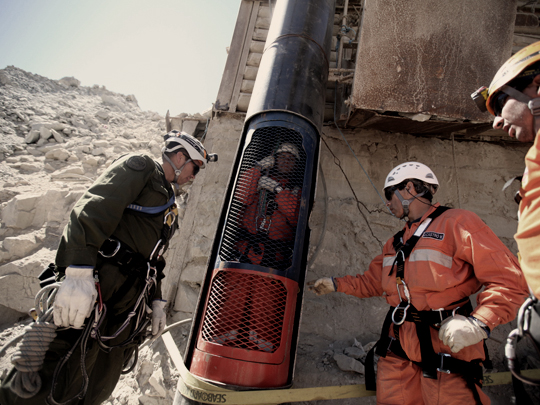
The Chilean mining accident began on 5 August 2010 when the San José copper-gold mine caved-in. The mine was located 45 kilometers (28 miles) north of the regional capital of Copiapó, in the Atacama Desert.
Thirty-three men were trapped 700 meters (2,300 ft) underground, 5 kilometers (3 miles) from the mine’s entrance, via spiraling underground ramps.
The state-owned mining company, Codelco, took over rescue efforts from the mine’s owners and drilled exploratory boreholes.
Seventeen days after the accident, a note was found taped to a drill bit when it was pulled back to the surface. It read, “Estamos Bien en el Refugio, Los 33” (“We are well in the shelter, the 33 of us”).
The trapped miners’ emergency shelter had an area of 50 square meters (540 sq ft), but ventilation problems forced them to move out into a tunnel. They had access to 2 kilometers of open tunnels to move around, getting some exercise or privacy.
The shelter’s emergency supplies were intended to last up to three days, but through rationing, they made their resources last for two weeks, running out just before they were discovered, with each man losing an average of 8 kgs (18 lb).
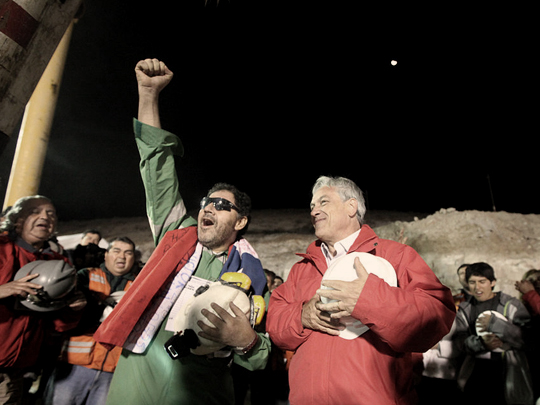
Three separate drilling rig teams, nearly every Chilean government ministry, the United States’ NASA space agency, and a dozen corporations from around the world cooperated to complete the rescue.
On 13 October, 69 days after the accident, the men were winched to the surface one at a time, in a specially built capsule. The rescue was watched by an estimated 1 billion people worldwide.
Manuel González was the first rescuer down and the last up, spending 25 hours 14 minutes in the mine. Altogether, the rescue capsule, Fénix 2, made 39 round trips, traveling a total distance of approx 50 kilometers (31 miles).
All but two of the men went home within 48 hours of their rescue, and by 19 October all had left the hospital, with no long-term physical effects anticipated.
In the decade or so leading up to the accident, previous geological instability and a long record of safety violations for the mine’s owners, San Esteban Mining Company, had resulted in a series of fines and accidents, including eight deaths.
In August 2013, following three years of work, lawsuits and investigations into the collapse concluded with no charges filed.
7 – The Gaza Flotilla Raid
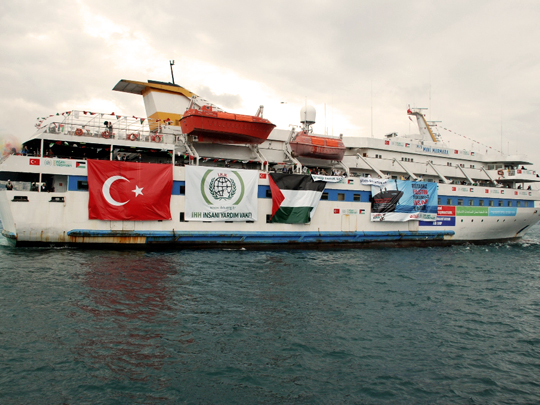
The Gaza flotilla raid was a military operation by Israel in the international waters of the Mediterranean Sea against six civilian ships of the so-called “Gaza Freedom Flotilla” on 31 May 2010.
Three of the six flotilla ships were carrying humanitarian aid and construction materials, organized by the Free Gaza Movement and the Turkish Foundation for Human Rights and Freedoms and Humanitarian Relief.
The intentions of the flotilla were to break the Israeli blockade of the Gaza Strip, about which Israel had warned them to abort their mission, describing it as a provocation.
Israeli naval commandos boarded the ships from speedboats and helicopters to force them to the Israeli port of Ashdod for inspection. On the Turkish MV Mavi Marmara, about 40 of the 590 passengers were said to be armed with iron bars and knives.
During the struggle, nine activists, eight Turkish nationals and one Turkish American, were killed, with many more wounded. On 23 May 2014, a tenth member of the flotilla died in hospital after being in a coma for four years.
Ten Israeli commandos were also wounded, one of them seriously. The five other ships in the flotilla employed passive resistance, which was suppressed without major incident, after which they were towed to Israel.
The Palmer report was published by the United Nations on 2 September 2011. It found the Israeli naval blockade of Gaza was legal, and that there were “serious questions about the conduct, true nature and objectives of some of the flotilla organizers.”
The report also found the degree of force used against the Mavi Marmara was “excessive and unreasonable”, and that the way Israel treated detained crew members violated international human rights law.
On 22 March 2013, Israel’s Prime Minister Benjamin Netanyahu apologized to Turkey’s Prime Minister Recep Tayyip Erdoğan on behalf of his nation via a telephone conversation.
